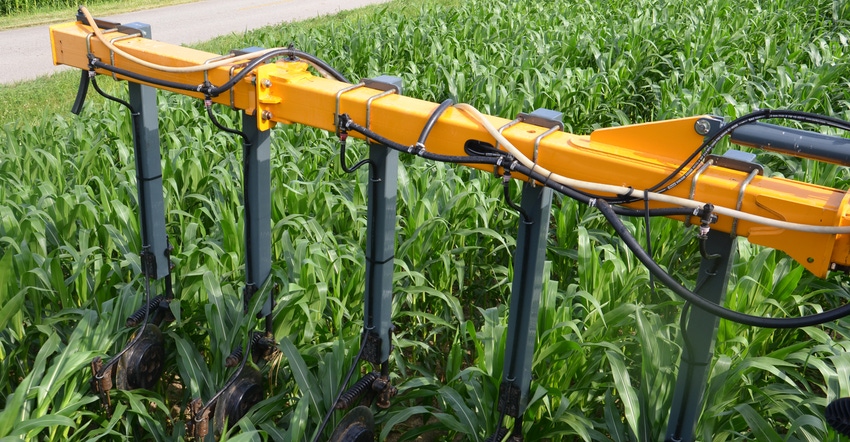
If you managed nitrogen in corn in 2016 exactly the same way you did in 2015, you may have seen a different outcome. Although you can’t predict the season's weather in advance, Jim Schwartz believes you give yourself an edge on N management by having flexibility to apply N at different times, especially later in the season.
360 Yield Center offers the Y-Drop, designed for making late N applications with high-clearance equipment. Schwartz is an agronomist with 360 Yield Center. He acknowledges that in some cornfields in 2016, side-by-side comparisons between late applications and other N timings didn’t show an economic advantage to the later application. However, he still feels having the ability to apply N later in the season is important. There are other ways to apply N late, such as with high-clearance bars that attach to high-clearance sprayers and inject N.
Here are reasons why Schwartz recommends putting yourself in a position to adjust N application.
• Not the right year. Late-season applications didn’t always make a difference in 2016 because nitrogen mineralization rates were above average, Schwartz says. Instead of the soil providing 30 to 40 pounds of N, in some cases it provided 80 pounds per acre or higher.
• Right conditions. Fewer cases of waterlogged soils early in 2016 vs. 2015 meant there was more oxygen in the soil. More oxygen coupled with warmer temperatures favored more conversion of organic N into inorganic forms that plants could use, Schwartz says. Less saturated soil usually translates into less N loss by denitrification or leaching.
• When late-season N shines. Applying N with a high-clearance rig at V12 will pay more returns in a year when either N mineralization occurs at a slower rate or N losses are higher, or both, Schwartz says. That’s why late-season N applications tended to pay off more in 2015 than in 2016, he says.
• Hybrid trends. Schwartz points to information that says modern hybrids take up more than a fourth more N later in the season compared to earlier hybrids. The ideal situation is to have nitrogen available when plants need it most, he observes.
• Flexibility factor. Even though late-season application didn’t show a benefit in some cases in ’16, Schwartz still believes it’s a valuable option. It gives you the ability to shift applying part of your total N rate later in the season if it turns out to be a season where it appears there may be a benefit for late-applied N.
• Observe and react. The least-flexible system is to apply all N in the fall. If you apply all N in the spring before planting, you don’t have lots of flexibility, but you at least move N application closer to time of use.
If you sidedress, you gain more flexibility. By then, you have a better handle on what the season will be like, Schwartz says. If it looks like 2015, with wetter soils and cooler temperatures, you may want to hold some N to apply later if you have the capability. If it looks like 2016, with higher rates of mineralization and less loss, it may not matter, he concludes.
About the Author(s)
You May Also Like




